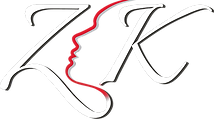PRIMARY RHINOPLASTY
BY ZIAD KATRIB, MD FACS
Introduction To Primary Rhinoplasty
During the initial consult, we will discuss all the motivations for the operation, and both what is achievable and what is not. It is important to understand that there are many limitations in this operation. No nose is perfect before surgery, and certainly no nose is perfect afterwards. All Rhinoplasty patients, primary or revision, will have imperfections post operatively. Fortunately, the vast majority of these are very minor, and imperceivable to the untrained eye.
We perform structure Rhinoplasty in all cases, and at all times. This means that we are not simply removing things from the nose, but rather re-shaping, re-orienting, and supporting the nose. This is critical to achieve and maintain both the maximal functional and aesthetic result, long term.
There is no objective measurement of what constitutes a “successful” Rhinoplasty. This is due to the fact that every human being has a different perception of what the ideal nose looks like. We ultimately aim to create a natural, refined, functional, and durable result in every single patient we perform surgery on. This requires different techniques and a different operation for each patient.
Some common reasons patients seek Rhinoplasty are:
- Dorsal Hump
- Asymmetry of tip and/or bridge
- Bulbous tip
- Overprojected nose
- Droopy tip
- Wide tip and/or bridge
- Breathing/functional issues

How A Primary Rhinoplasty Works
We perform Rhinoplasty under General Anesthesia. This is both for patient comfort, and for patients safety. This is performed at an 800 bed major hospital in downtown Louisville, Kentucky. In 98% of cases, we perform “open” Rhinoplasty, which means we create a 4-6mm incision under the nose in order to access all areas of the nose with high precision and low trauma. This scar is typically invisible by 3 months in 99% of patients.
The most important aspect of successful Rhinoplasty is successful Septoplasty. If the septum is not made straight, the nose cannot be straight. If a hump is present, this is removed. The nasal bones are typically shifted using a combination of hand saws and powered instrumentation. The tip is built using strong cartilage grafts (septal extension grafts), and is reshaped with no removal of cartilage needed. The tip cartilage, rather, is reshaped and reoriented to both maximize definition and improve function, all while preserving what Mother Nature has placed in the nose. At the conclusion of surgery, internal nasal splints are placed as a “cast” for the airways, and an external splint is placed as a “cast” for the bones. These are all removed at the 1 week visit.
How The Recovery Works
After the cast and internal splints are removed at the 1 week visit, tape is typically applied to the nose. This is most often changed every 3-5 days, and worn for at least the first 6 weeks if not longer.
In the early periods of healing, the nose must be moisturized both at the incision under the nose, and internally. This is accomplished with the generous and frequent application of ointment and gel saline spray. This is especially important during the dry winter months, and is typically performed for the first 3-9 months after surgery.
Swelling after Rhinoplasty is extremely variable, and is dependent on many factors. Some common factors are skin thickness, patient age, patient health, diet and lifestyle, and patient compliance with post-operative instructions. It takes 2-3 years for most patients to have complete resolution of all swelling, however most patients are “studio ready” as early as 2-3 months post-operatively.
